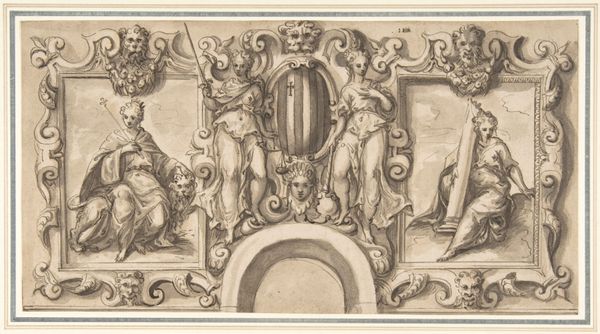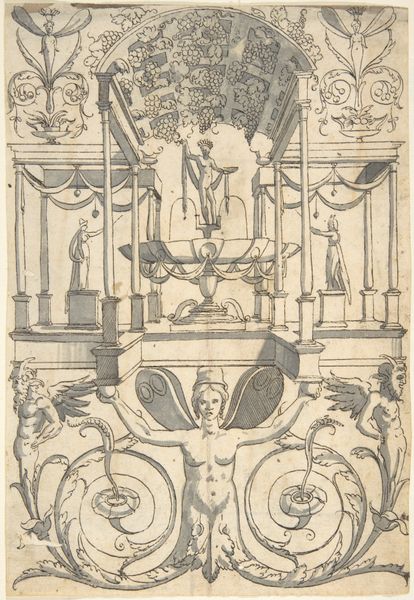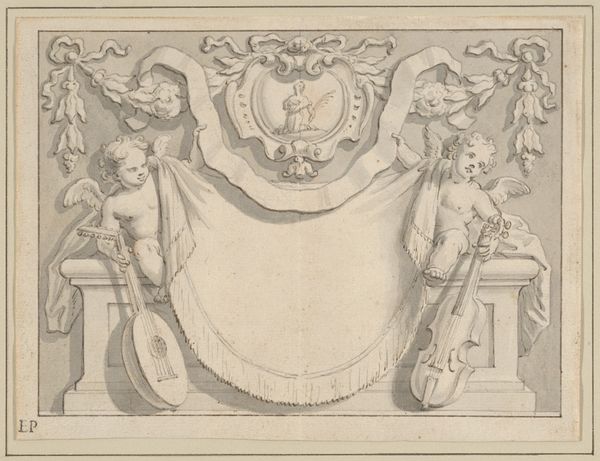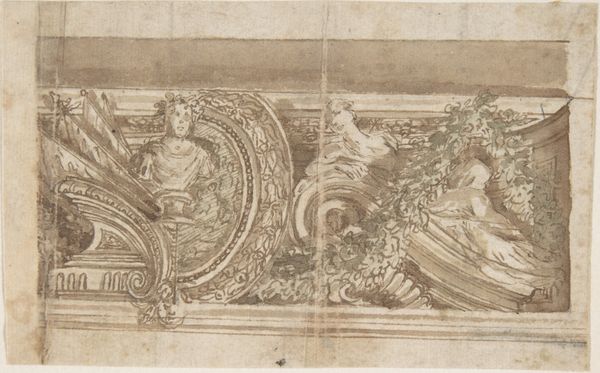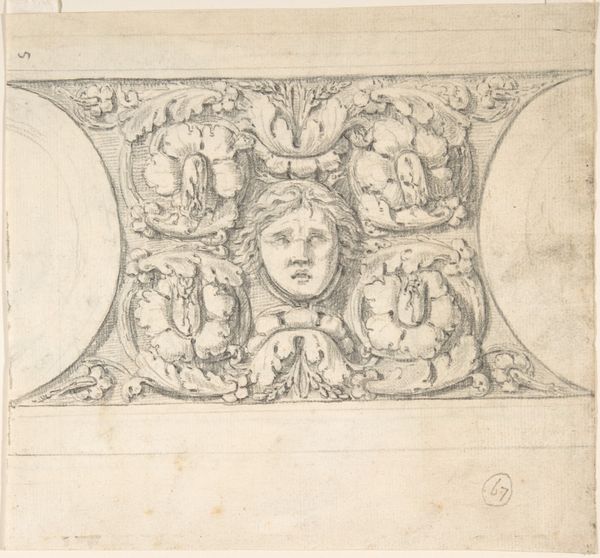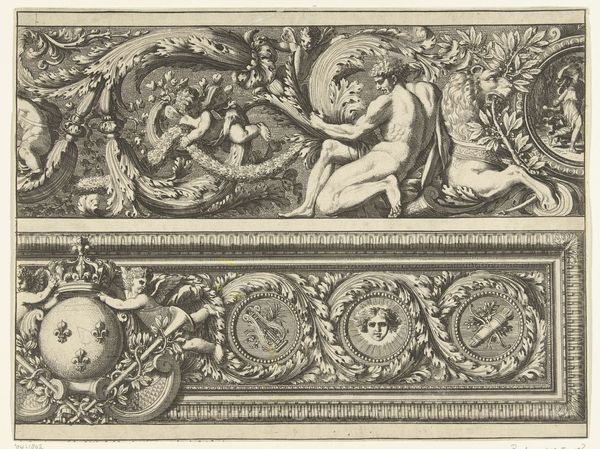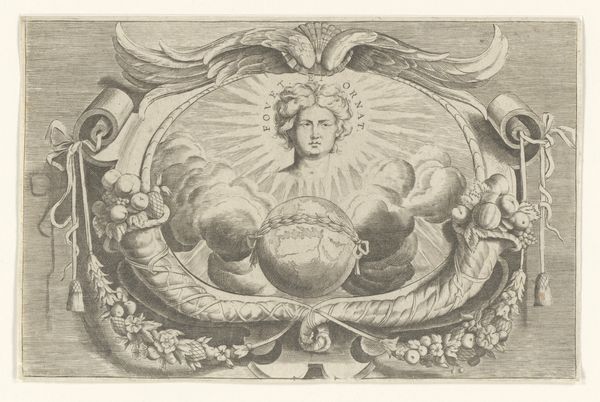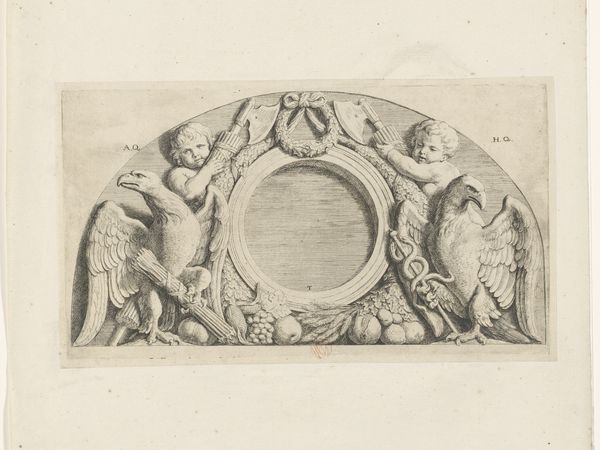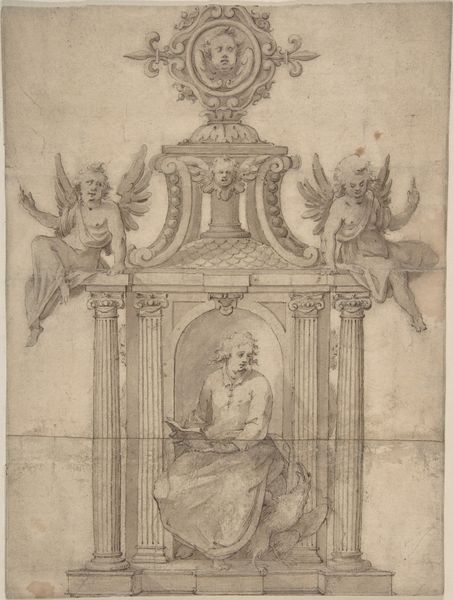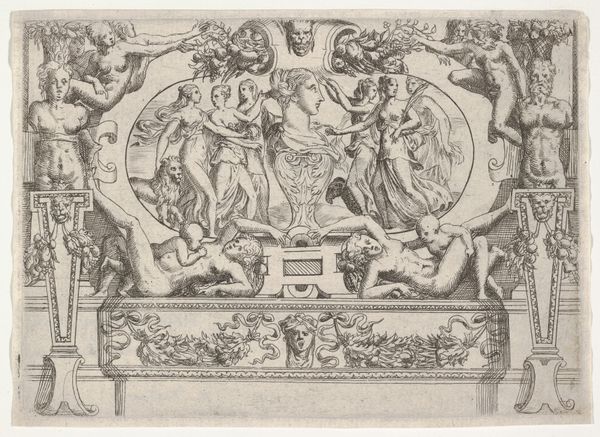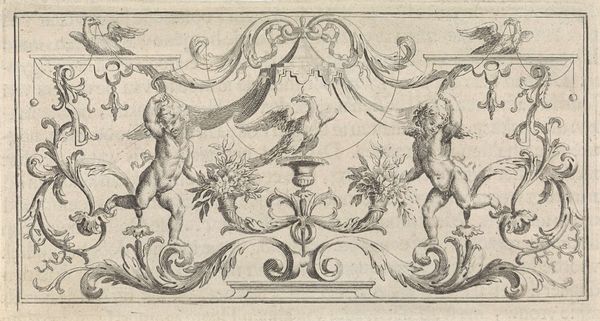
Antique Roman Sculpture with Nude Winged Boy at the Center and Leaves and Vines 1776 - 1779
0:00
0:00
drawing, relief, sculpture, pencil, graphite
#
drawing
#
neoclacissism
#
allegory
#
relief
#
classical-realism
#
geometric
#
sculpture
#
pencil
#
graphite
#
nude
Dimensions: sheet: 11 1/8 x 15 3/16 in. (28.3 x 38.6 cm)
Copyright: Public Domain
Curator: The first impression is delicate, almost ghostly. It’s the graphite that gives it such an ethereal quality. Editor: Indeed. What we're looking at is entitled, "Antique Roman Sculpture with Nude Winged Boy at the Center and Leaves and Vines." This graphite and pencil drawing of a relief sculpture, rendered between 1776 and 1779 by Thomas Hardwick, transports us to the Neoclassical era with precision. Curator: That's fascinating, seeing that moment in the 18th century when Roman art was becoming something to emulate and collect. How would such drawings be received in those cultural circles? Editor: These kinds of detailed drawings served multiple functions. They could document ancient artifacts for scholarly purposes, circulate ideas about design, and fuel the Neoclassical movement's revival of classical forms and themes. Hardwick’s drawing allowed wider audiences to appreciate Roman aesthetics. Curator: The nude winged boy… he seems to be emerging from—or perhaps being consumed by—nature. Do you think Hardwick is intentionally echoing those themes of metamorphosis and rebirth so often associated with classical mythology? Editor: Absolutely. The vines and leaves are not merely decorative; they encapsulate the constant flux inherent in nature and reflect ideas about cycles of life, death, and renewal. Even his wings have feathers stylized to mimic plant leaves! Allegory of youth is present with an almost overgrown effect. Curator: The helmet suggests some form of triumph or dominion, but the child’s pose feels oddly passive. Is Hardwick intentionally juxtaposing symbols of power with that of innocence? Editor: That is a brilliant question! I agree. Hardwick is working within established Neoclassical themes. The visual representation can be tied to socio-political values that equate political power to virtue, which can make art with such subject matter relevant. Curator: It’s intriguing how he uses simple graphite to create a layered visual experience, revealing how symbols continue to carry a depth of human meaning through time. Editor: Examining it closely brings us to consider art as public discourse, even as it touches on our cultural narratives. Let’s let our listeners here today examine and ponder these complexities through their own lived experience.
Comments
No comments
Be the first to comment and join the conversation on the ultimate creative platform.
